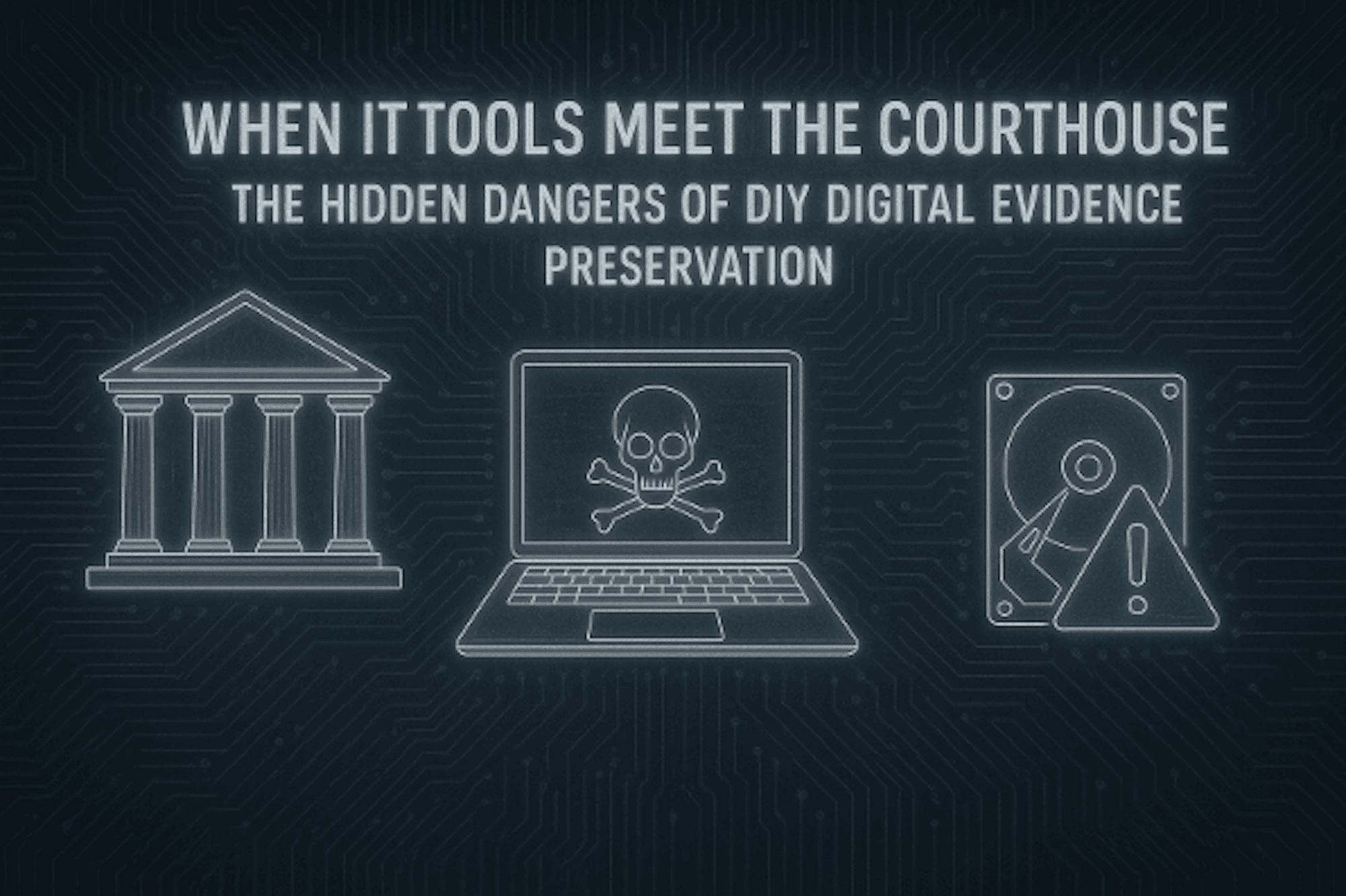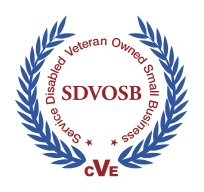Unvalidated Tools, Unreliable Results: Why “Works for IT” Isn’t Enough in Court
Contributed by: Kris Carlson, LCG COO, Former ICAC Commander, and Digital Forensics Investigator/Testifying Expert
“There is a critical need in the law-enforcement community to ensure the reliability of computer forensic tools.”
– National Institute of Standards and Technology, Computer Forensic Tool Testing (CFTT) Program, NIST CSR.C.
Introduction – the hidden risk baked into convenience
Cloud dashboards, admin consoles, and third-party data duplication/backup tools have made copying data as easy as clicking “Export.” That same frictionless experience tempts corporate IT staff and others subject to discovery requirements to treat preservation as just another backup job. However, the courtroom is not impressed, nor does the concept of convenience sway it. Judges evaluate digital evidence under the same scientific rigor that governs DNA or ballistics, as dictated by the Daubert reliability test. When a collection utility has never been validated, does not rely upon cryptographic hashes, and keeps no immutable log, its output can be questioned in discovery, handing the opposition a golden opportunity to exclude, impeach, or raise settlement leverage.
This article, the second in our five-part series on the dangers of DIY digital evidence preservation, explains why unvalidated tools shift the admissibility battlefield before a single motion is filed. (Legal Information Institute)
Forensic science demands validation, not popularity.
In Daubert v. Merrell Dow, the U.S. Supreme Court laid out four reliability indicators for scientific evidence: testability, peer review, known or potential error rate, repeatability, and general acceptance, a checklist courts now read directly into Federal Rule of Evidence 702. Software is no exception; if a tool cannot show a predictable error rate or publish repeatable test results, a judge may deem its output unreliable. The problem is that many IT-centric utilities were written for operational convenience, not forensics. They have never faced adversarial review, have no verification metrics that are published, and often change silently with every auto-update. There is no documentation regarding how the tools work or what changes may occur to the data, and when counsel relies on these tools, they shoulder the burden of proving in court what the vendor never bothered to prove in the lab.
Recent amendments to Rule 702 that took effect in December 2023 reinforce this stance by clarifying that the proponent of expert testimony must demonstrate both relevance and reliability by a preponderance of evidence, closing loopholes that once let questionable software slide by on reputation alone. Dealers in “good enough” collections should read that as a warning sign.
NIST CFTT vs. the “export-and-hope” culture
For two decades, the National Institute of Standards and Technology has maintained the Computer Forensics Tool Testing (CFTT) Program, publishing granular reports on disk-imaging, file-carving, mobile-collection, and hardware write-block tools. Its public catalogue lets examiners point to independent repeatable testing when defending methodology. Industry-standard suites such as EnCase, Forensic Tool Kit, Magnet Forensics Axiom, and X-Ways routinely appear in those reports, complete with pass/fail tables and hash-match statistics, exactly the transparency courts expect.
Contrast that with a typical Microsoft 365 Content Search export. Microsoft’s documentation acknowledges that exports are estimates, may drop partially indexed items, and (crucially) do not embed cryptographic hashes in the PST or CSV output. The community forums confirm what every corporate lit-support lead eventually discovers: “there doesn’t seem to be a hash field as part of the export results.” Without hashes and acquisition logs, a receiving party (or the court) has no way to verify that items were not altered during transfer or review.
Even advanced “defensible copy” scripts that pull from SharePoint or OneDrive through Graph API leave validation to the practitioner, who must write separate code to compute hashes after the fact. One missed parameter or silent network retry, and the export becomes evidentiary quicksand. In short, NIST-validated forensic tools quantify risk; generic IT exports externalize it.
SWGDE: verification is non-negotiable
The Scientific Working Group on Digital Evidence (SWGDE) calls verification “the validation of the integrity of the acquired data by comparing the hash of the acquired data to the hash of the acquisition stream or source data”(NIST Computer Security Resource Center) In its 2023 Best Practices for Computer Forensic Acquisitions, SWGDE warns that logical copies (the mode many admin tools default to) can shed metadata, overlook host-protected areas, and silently exclude damaged sectors. The remedy is straightforward:
- Acquire with a write-blocker or trusted logical-imaging routine.
- Compute a NIST-approved hash (e.g., SHA-256) during acquisition.
- Generate a verification report or manifest.
- Log every error, even bad sectors that could later fuel spoliation claims.
IT utilities rarely meet any of those criteria. They focus on speed, familiarity, and least-privilege access, not forensic completeness. That trade-off is acceptable for the continuity of business, but lethal when opposing counsel files a Daubert motion aimed squarely at your collection tool.
Artifact loss and misinterpretation—the quiet sabotage
Tool choice also dictates how much of a system you can actually capture. As an example, some mobile device logical extractions omit relevant databases, third-party applications, and other potentially relevant data, including deleted remnants that may contain exculpatory or incriminating evidence.
The stakes climb with IoT environments. SWGDE’s brand-new Best Practices for Internet of Things Seizure and Analysis highlights that IoT artifacts may live in “manufacturer companion apps, cloud storage, or other connected devices,” and warns that assumptions based on device type or model are risky because firmware updates can relocate or rename log files overnight.. A point-and-click network grab that overlooks those ephemeral stores could miss the very artifact (e.g., GPS ping, thermostat schedule, smart-lock log, etc.) that proves or disproves an alibi.
In these scenarios, unvalidated tools don’t just jeopardize admissibility; they actively erase investigative value by truncating the available universe of data. Often, there is only one bite at the apple, as once volatility or circular logging overwrites that evidence, no subsequent “proper” collection can resurrect it.
Screenshots vs. structured data—U.S. v. Vayner as a cautionary tale
Perhaps the most cited example of tool-driven failure is United States v. Vayner, where the Second Circuit vacated a conviction after finding that mere screenshots of a Russian social-media page were insufficient for authentication. The panel ruled that without corroborating technical evidence tying the account to the defendant, the images lacked a proper foundation.
What the opinion does not say, but every examiner reads between the lines, is that a validated capture tool capable of pulling the platform’s native data (including unique account IDs, server timestamps, and platform-generated signatures) would likely have survived the authenticity challenge. In other words, the content was less decisive than the collection method. Choosing a screenshot utility over an industry-tested and accepted tool resulted in a reversible error.
Who is your expert witness?
Although it may feel expedient and even penny-wise to ask the resident IT team member to preserve data for litigation, every shortcut may become a courtroom question. Digital forensics experts are not just button-pushers with fancy software; they are trained professionals with vast experience whose work follows defensible, repeatable methodologies utilizing field-tested and frequently NIST-verified tools. When opposing counsel starts probing the collection process, you want a credentialed expert on the stand who can explain, in painstaking detail, exactly how the data was captured, preserved, and analyzed. Their sworn affidavits and expert reports carry the weight of recognized standards and peer-reviewed techniques to prevent your data from dissolving under cross-examination.
In contrast, imagine instead the well-meaning IT specialist who just fixed your printer, reset your password five minutes ago, and is now scrambling to “pull some emails,” which were exported to a PST file and zipped up. The question remains, can they walk a judge through this process in a way that meets even the lowest of reliability thresholds? Most likely, the use of one-off tools and improvised processes would not survive even the most forgiving legal scrutiny. And if this same IT specialist stands to gain or lose from the lawsuit’s outcome, you’ve just handed opposing counsel another line of attack: a conflict of interest. Every gap in training, every undocumented tweak, every potential bias becomes fodder for a motion to exclude your evidence.
Conclusion – validation is a strategic investment, not a line item
Legal teams often ask whether engaging appropriate personnel to utilize forensic-grade tools and processes is worth the money when “IT already has admin access.” The answer lies in who will bear the cost of failure. Unvalidated tools push that cost downstream, into motion practice, expert rebuttals, settlement concessions, and reputational damage. By adopting NIST-tested software, following SWGDE verification protocols, and aligning every collection with Daubert reliability factors, organizations transform evidence preservation from a liability into strategic leverage.
The choices you make long before trial may determine whether your evidence walks confidently through the courthouse door or waits outside with an authenticity problem. In the next installment of this series, Part 3, we will shift from technology to talent, examining how certification gaps and cognitive bias can sabotage even the most defensible toolchain. Stay tuned.







